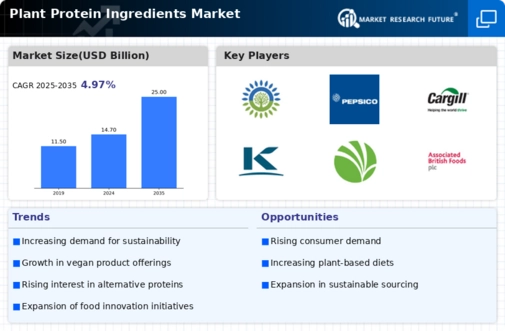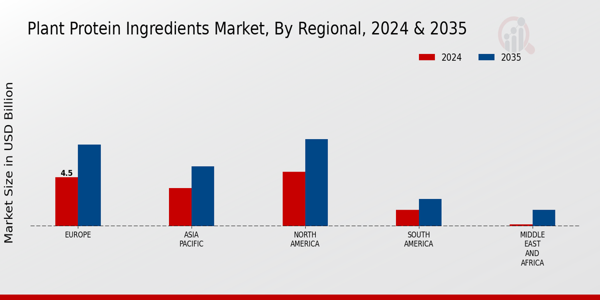The Plant Protein Ingredients Market has witnessed significant growth in recent years, driven by rising consumer demand for plant-based products, increasing health consciousness, and a shift towards sustainable food sources.
This competitive landscape is characterized by various players, each striving to capture significant market shares through innovation, strategic partnerships, and an expanding product range.
Factors such as the increasing prevalence of veganism and vegetarianism, coupled with the desire for gluten-free and allergen-free alternatives, have spurred companies to develop diverse plant protein offerings made from sources like peas, soy, and grains.
The competitive insights reveal that companies in this market are leveraging advanced technologies to enhance their manufacturing processes and improve product quality, thus positioning themselves effectively against competition.
SunOpta has established itself as a notable player within the Plant Protein Ingredients Market, exhibiting strong operational capabilities and a broad portfolio of plant-based products.
The company's emphasis on organic and non-GMO ingredients resonates well with the growing consumer trend toward natural, health-oriented food options.
With a commitment to sustainability and quality, SunOpta has developed strategic partnerships and collaborations to enhance its supply chain efficiency and broaden its market reach.
This strategic positioning allows SunOpta to effectively cater to various sectors, including food and beverage, nutraceuticals, and baked goods, thereby consolidating its presence in the competitive landscape of plant protein ingredients.
PepsiCo has made noteworthy strides in the Plant Protein Ingredients Market by diversifying its product offerings to include a range of plant-based protein snacks and beverages.
The company’s extensive market presence, bolstered by its established distribution channels, enhances its ability to deliver innovative solutions that resonate with health-conscious consumers.
Key products include plant-based protein bars and protein-infused beverages, which align with the increasing shift towards functional and nutritious food options.
PepsiCo's strengths lie in its strong brand recognition and commitment to research and development, enabling it to stay ahead in the competitive landscape.
Furthermore, the company has been involved in strategic mergers and acquisitions, bolstering its capabilities and market access, particularly in the realm of plant-based nutrition, thereby further solidifying its position in the global market for plant protein ingredients.


















Leave a Comment